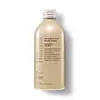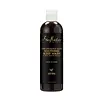What's inside
What's inside
 Key Ingredients
Key Ingredients

No key ingredients
 Benefits
Benefits

 Concerns
Concerns

 Ingredients Side-by-side
Ingredients Side-by-side

Water
Skin ConditioningCocamidopropyl Hydroxysultaine
CleansingSodium Lauroyl Methyl Isethionate
CleansingPolysorbate 20
EmulsifyingParfum
MaskingGlycerin
HumectantPEG-150 Distearate
EmulsifyingSodium Chloride
MaskingSodium Benzoate
MaskingSodium Methyl Isethionate
EmulsifyingCocamidopropyl Dimethylamine
EmulsifyingLauric Acid
CleansingPolyquaternium-10
Citric Acid
BufferingSodium Laurate
CleansingSimmondsia Chinensis Seed Oil
EmollientSodium Acetate
BufferingIsopropyl Alcohol
SolventLavandula Hybrida Oil
EmollientPelargonium Graveolens Oil
MaskingOcimum Basilicum Oil
MaskingRosmarinus Officinalis Leaf Oil
MaskingWater, Cocamidopropyl Hydroxysultaine, Sodium Lauroyl Methyl Isethionate, Polysorbate 20, Parfum, Glycerin, PEG-150 Distearate, Sodium Chloride, Sodium Benzoate, Sodium Methyl Isethionate, Cocamidopropyl Dimethylamine, Lauric Acid, Polyquaternium-10, Citric Acid, Sodium Laurate, Simmondsia Chinensis Seed Oil, Sodium Acetate, Isopropyl Alcohol, Lavandula Hybrida Oil, Pelargonium Graveolens Oil, Ocimum Basilicum Oil, Rosmarinus Officinalis Leaf Oil
Water
Skin ConditioningAloe Barbadensis Leaf Juice
Skin ConditioningSodium Lauroyl Methyl Isethionate
CleansingCocamidopropyl Betaine
CleansingGlycerin
HumectantParfum
MaskingTocopherol
AntioxidantGlycine Soja Oil
EmollientCocos Nucifera Oil
MaskingElaeis Guineensis Kernel Oil
EmollientButyrospermum Parkii Butter
Skin ConditioningAvena Sativa Kernel Extract
AbrasiveTheobroma Cacao Husk
AbrasiveJojoba Esters
EmollientCI 77499
Cosmetic ColorantGuar Hydroxypropyltrimonium Chloride
Skin ConditioningCaramel
Cosmetic ColorantTrisodium Ethylenediamine Disuccinate
Sodium Chloride
MaskingSodium Benzoate
MaskingTriethyl Citrate
MaskingCaprylyl Glycol
EmollientBenzoic Acid
MaskingWater, Aloe Barbadensis Leaf Juice, Sodium Lauroyl Methyl Isethionate, Cocamidopropyl Betaine, Glycerin, Parfum, Tocopherol, Glycine Soja Oil, Cocos Nucifera Oil, Elaeis Guineensis Kernel Oil, Butyrospermum Parkii Butter, Avena Sativa Kernel Extract, Theobroma Cacao Husk, Jojoba Esters, CI 77499, Guar Hydroxypropyltrimonium Chloride, Caramel, Trisodium Ethylenediamine Disuccinate, Sodium Chloride, Sodium Benzoate, Triethyl Citrate, Caprylyl Glycol, Benzoic Acid
 Reviews
Reviews

Ingredients Explained
These ingredients are found in both products.
Ingredients higher up in an ingredient list are typically present in a larger amount.
Glycerin is already naturally found in your skin. It helps moisturize and protect your skin.
A study from 2016 found glycerin to be more effective as a humectant than AHAs and hyaluronic acid.
As a humectant, it helps the skin stay hydrated by pulling moisture to your skin. The low molecular weight of glycerin allows it to pull moisture into the deeper layers of your skin.
Hydrated skin improves your skin barrier; Your skin barrier helps protect against irritants and bacteria.
Glycerin has also been found to have antimicrobial and antiviral properties. Due to these properties, glycerin is often used in wound and burn treatments.
In cosmetics, glycerin is usually derived from plants such as soybean or palm. However, it can also be sourced from animals, such as tallow or animal fat.
This ingredient is organic, colorless, odorless, and non-toxic.
Glycerin is the name for this ingredient in American English. British English uses Glycerol/Glycerine.
Learn more about GlycerinParfum is a catch-all term for an ingredient or more that is used to give a scent to products.
Also called "fragrance", this ingredient can be a blend of hundreds of chemicals or plant oils. This means every product with "fragrance" or "parfum" in the ingredients list is a different mixture.
For instance, Habanolide is a proprietary trade name for a specific aroma chemical. When used as a fragrance ingredient in cosmetics, most aroma chemicals fall under the broad labeling category of “FRAGRANCE” or “PARFUM” according to EU and US regulations.
The term 'parfum' or 'fragrance' is not regulated in many countries. In many cases, it is up to the brand to define this term.
For instance, many brands choose to label themselves as "fragrance-free" because they are not using synthetic fragrances. However, their products may still contain ingredients such as essential oils that are considered a fragrance by INCI standards.
One example is Calendula flower extract. Calendula is an essential oil that still imparts a scent or 'fragrance'.
Depending on the blend, the ingredients in the mixture can cause allergies and sensitivities on the skin. Some ingredients that are known EU allergens include linalool and citronellol.
Parfum can also be used to mask or cover an unpleasant scent.
The bottom line is: not all fragrances/parfum/ingredients are created equally. If you are worried about fragrances, we recommend taking a closer look at an ingredient. And of course, we always recommend speaking with a professional.
Learn more about ParfumSodium Benzoate is a preservative. It's used in both cosmetic and food products to inhibit the growth of mold and bacteria. It is typically produced synthetically.
Both the US FDA and EU Health Committee have approved the use of sodium benzoate. In the US, levels of 0.1% (of the total product) are allowed.
Sodium benzoate works as a preservative by inhibiting the growth of bacteria inside of cells. It prevents the cell from fermenting a type of sugar using an enzyme called phosphofructokinase.
It is the salt of benzoic acid. Foods containing sodium benzoate include soda, salad dressings, condiments, fruit juices, wines, and snack foods.
Studies for using ascorbic acid and sodium benzoate in cosmetics are lacking, especially in skincare routines with multiple steps.
We always recommend speaking with a professional, such as a dermatologist, if you have any concerns.
Learn more about Sodium BenzoateChances are, you eat sodium chloride every day. Sodium Chloride is also known as table salt.
This ingredient has many purposes in skincare: thickener, emulsifier, and exfoliator.
You'll most likely find this ingredient in cleansers where it is used to create a gel-like texture. As an emulsifier, it also prevents ingredients from separating.
There is much debate on whether this ingredient is comedogenic. The short answer - comedogenic ratings don't tell the whole story. Learn more about comegodenic ratings here.
The concensus about this ingredient causing acne seems to be divided. Research is needed to understand if this ingredient does cause acne.
Scrubs may use salt as the primary exfoliating ingredient.
Learn more about Sodium ChlorideSodium Lauroyl Methyl Isethionate is a cleansing ingredient. It is a surfactant, meaning it helps gather dirt, oil, and other pollutants. This helps them be rinsed away easily.
Water. It's the most common cosmetic ingredient of all. You'll usually see it at the top of ingredient lists, meaning that it makes up the largest part of the product.
So why is it so popular? Water most often acts as a solvent - this means that it helps dissolve other ingredients into the formulation.
You'll also recognize water as that liquid we all need to stay alive. If you see this, drink a glass of water. Stay hydrated!
Learn more about Water